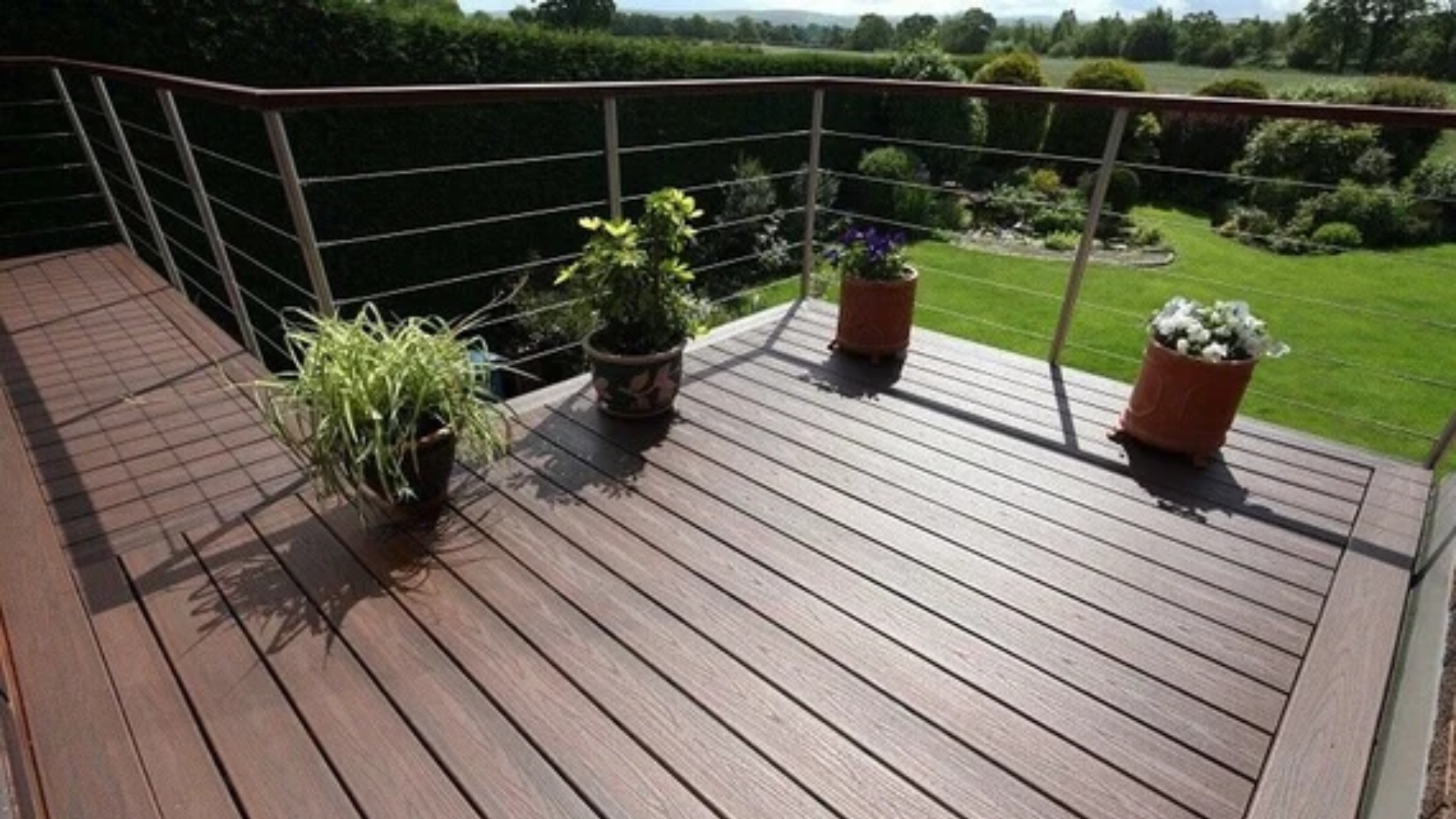When I was installing composite decking, I learned that spacing the boards correctly is one of the most important steps.
It might seem like a small detail, but the right gap helps with drainage, airflow, and even expansion when the boards heat up in the sun.
If the boards are too close together, water can pool and cause problems over time. Too far apart, and things might look uneven or feel off underfoot.
Getting it right keeps your deck looking good and lasting longer. In this blog, I’ll break down everything you need to know about composite deck board spacing.
I’ll cover the ideal gap size, tips for proper installation, and what happens if you skip this step.
If you’re building a composite deck or just replacing boards, this guide will help you avoid common mistakes and get the spacing just right.
What Is Composite Decking?
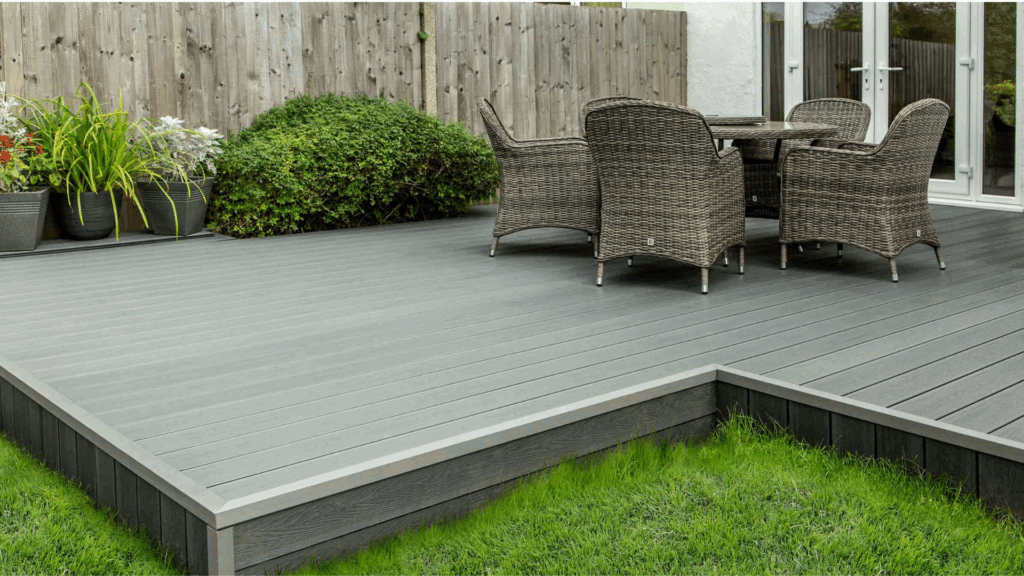
Composite decking is a type of building material made from a mix of wood fibers and recycled plastic. It’s built to look like real wood but is much more durable and easier to care for.
Unlike natural wood, composite boards don’t rot, crack, or splinter over time. They’re also resistant to mold, fading, and insect damage. You don’t need to stain, paint, or seal them every year, which saves time and money.
Composite decking comes in many colors and styles, making it easy to match your outdoor space. Whether you want a modern look or something more natural, there’s a composite option for you.
It’s a smart choice for anyone who wants a long-lasting, low-maintenance deck that still looks great year after year.
Why Spacing Matters for Composite Decking?
Spacing is very important when installing composite decking because it helps your deck last longer and work better. Even though composite boards don’t absorb much water, they still need small gaps between them to let water drain off.
This keeps the boards dry and clean, which helps prevent mold and mildew. Spacing also gives the boards room to expand and contract with changes in temperature.
When it’s hot, the boards get slightly bigger, and when it’s cold, they shrink a little. If you don’t leave enough space, the boards can press against each other and warp or crack over time.
Gaps also make cleaning much easier by letting dirt, leaves, and debris fall through instead of getting stuck on top. This means you’ll spend less time scrubbing and more time enjoying your deck.
Proper spacing can also improve airflow under the deck, which helps keep the framing dry and strong. Over time, this can prevent rot and other moisture damage underneath.
Overall, getting the spacing right is one of the most important steps in building a safe, strong, and low-maintenance composite deck.
How to Space Composite Deck Boards
To space composite deck boards correctly, use spacers, follow the manufacturer’s instructions, start at the house edge, and measure carefully. Proper gaps ensure a safe, long-lasting, and easy-to-maintain deck.
Tools Needed for Deck Board Spacing
- 16D nails or plastic spacers – Use these to keep consistent 3/16-inch gaps between dry boards.
- Measuring tape – To check board alignment and spacing throughout the installation.
- Chalk line – Helps mark straight lines across the deck frame for even board placement.
- Drill and deck screws – For securing the boards to the joists. Use screws made for decking to avoid splitting.
- Circular saw or table saw – Useful for trimming or ripping the last board to fit.
- Level – Ensures boards are installed evenly for a flat, professional finish.
Step 1: Choose Your Spacing Based on Moisture
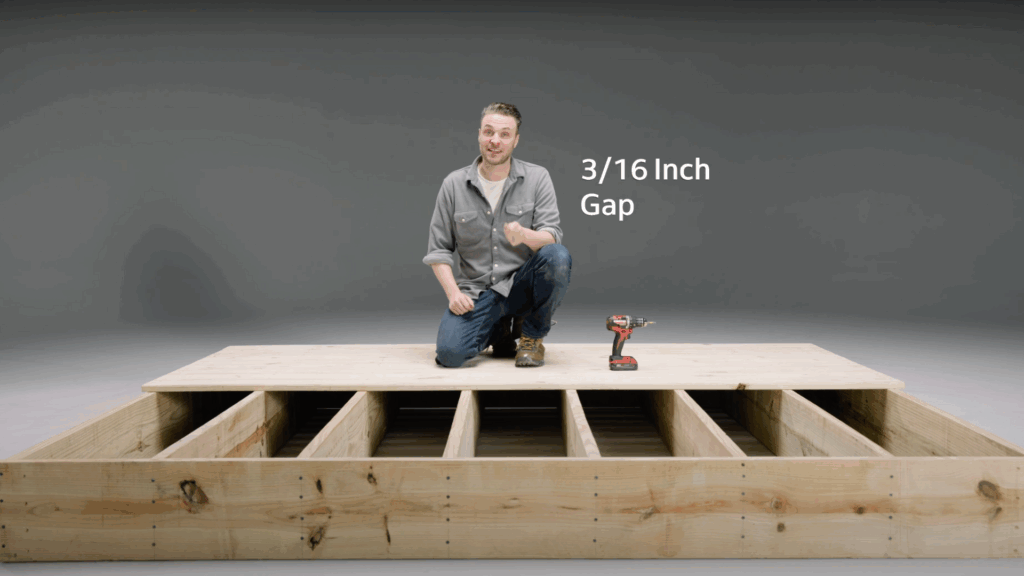
The spacing between deck boards depends on whether the wood is dry or wet at the time of installation. If your boards are already dry, you should leave a 3/16-inch gap between them.
This gap is ideal for allowing water drainage and air circulation. A 16D nail is about the right thickness and can be used as a handy spacer to keep your gaps even.
On the other hand, if you’re working with wet or pressure-treated wood, install the boards tightly together with no gap. As they dry, the boards will shrink naturally, creating the right amount of space on their own.
Step 2: Let the Wood Dry
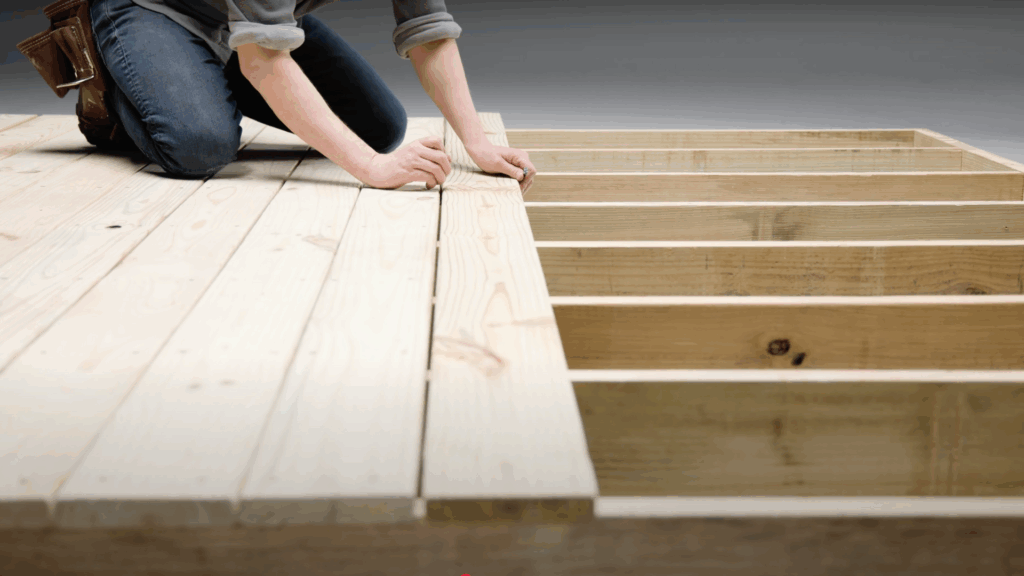
It’s always best to let your deck boards dry completely before installing them, especially if they were recently treated or rained on.
Dry boards are more stable, and spacing them properly is much easier because their size won’t change much after installation. This leads to a cleaner, more even look and fewer surprises as the seasons change.
However, many people don’t have the time to wait days or weeks for boards to dry.
If you’re in that situation, it’s okay to install them tightly while wet, as long as you understand that the boards will shrink and the proper spacing will appear later.
Step 3: Start Installing at the Edge of the Deck
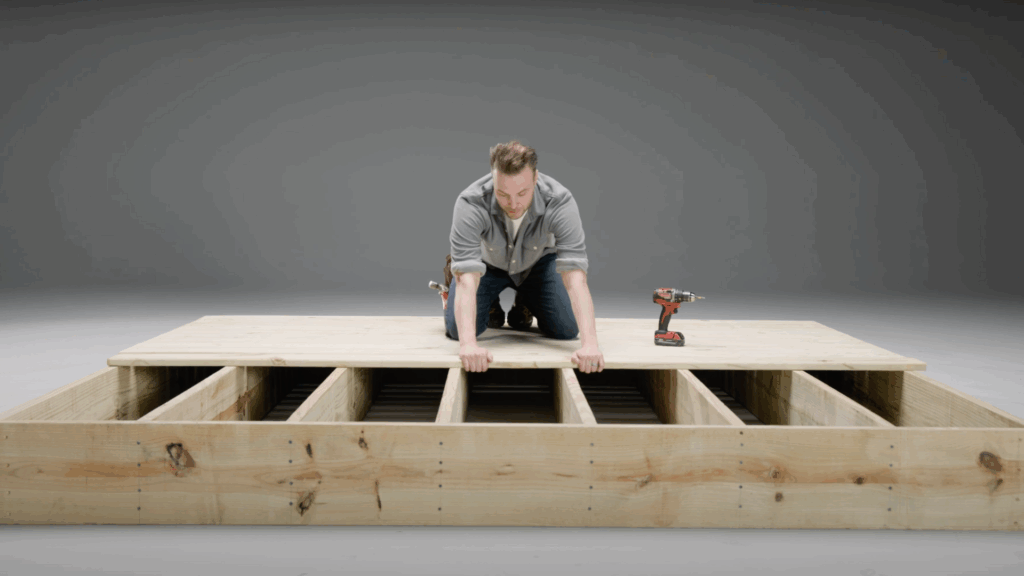
When it’s time to lay the boards, always start at the outer edge of the deck, the side farthest from the house, and work your way inward.
This installation method gives you more control over the layout and ensures the final board ends up next to the house. That’s important because you’ll likely need to trim (or rip) the last board to make it fit.
A narrow or oddly shaped final board is less noticeable when placed against the house or wall, where it’s mostly hidden from view.
Step 4: Maintain Your Deck
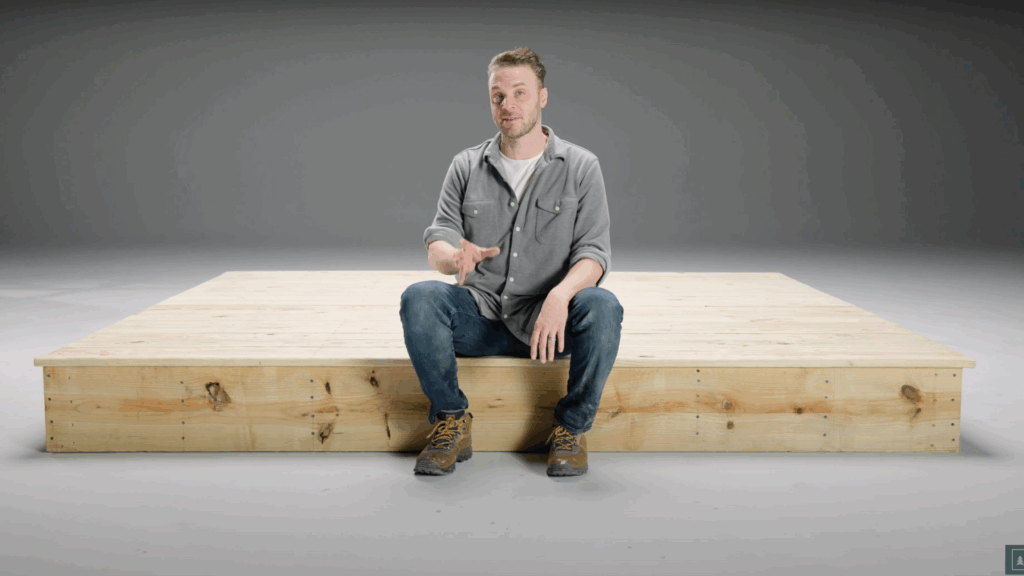
Even after installation, keeping your deck in great shape takes a little care. Proper board spacing helps your deck drain water, stay dry, and breathe, but it also needs to be kept clean.
Sweep off leaves, dirt, and debris regularly to keep the gaps clear and prevent moisture buildup. Use a garden hose or a soft brush to wash the surface a few times a year.
Avoid using high-pressure washers, as they can damage the boards or force dirt into the gaps.
For a visual guide, you can refer to this video on how to space deck boards by @ProWoodLumber on YouTube.
Things That Affect Composite Decking Spacing
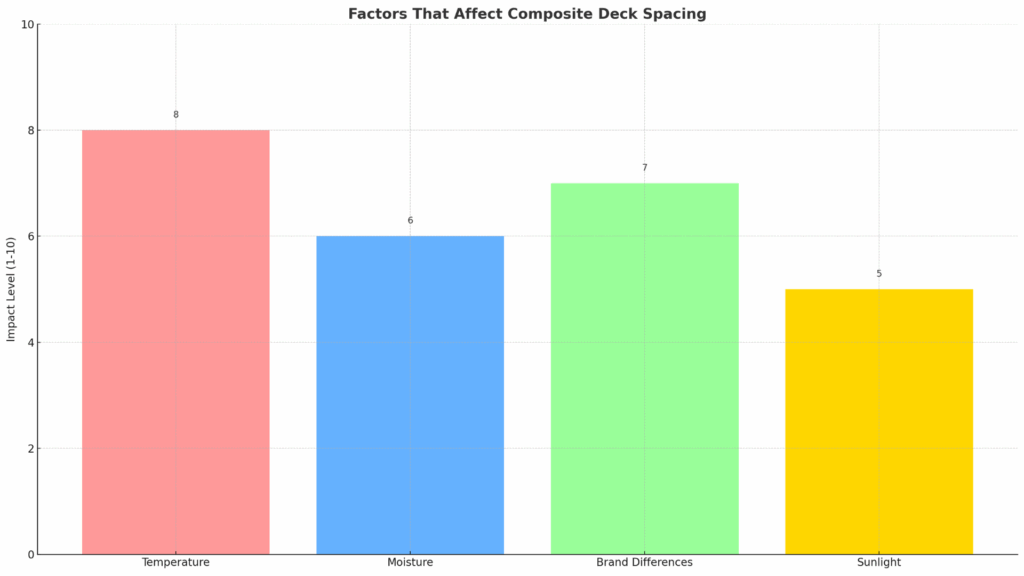
Several factors can change how much space you need between composite deck boards. Temperature, moisture, sunlight, and the brand of decking all play a part.
1. Temperature
Temperature plays a big role in how composite boards behave. In hot weather, boards expand and become slightly longer and wider, so you should use smaller gaps during installation.
In cold weather, the boards contract and become smaller, so wider gaps are needed to give them enough room to expand later. Always think about your local climate when choosing your spacing.
2. Moisture
Some composite decking contains wood fibers, which can swell slightly when they get wet. Even though composite boards don’t absorb as much moisture as wood, they can still change shape a little.
That’s why it’s important to read and follow your decking brand’s moisture-related guidelines before starting your project, especially if you’re installing in a humid or rainy area.
3. Brand Differences
Not all composite decking is the same. Each brand, like Trex, TimberTech, or Fiberon, has its own rules for how much space you should leave between boards.
Some need wider gaps, while others recommend tighter spacing. Always check your brand’s installation manual to make sure you’re using the right measurements for the product you’re working with.
4. Sunlight
Sunlight can cause boards to heat up and expand, especially if they are dark in color. Decks that get full sun exposure most of the day will see more expansion in the boards.
To prevent problems like warping or crowding, it’s a good idea to leave extra space between boards in sunny areas. This helps your deck stay strong and looking good throughout the seasons.
Brand Guidelines for Deck Board Spacing
Different composite decking brands have their own spacing rules based on how their boards expand and contract. This quick guide shows the recommended gaps for popular brands like Trex, TimberTech, and Fiberon.
| Brand | Side Gap | End Gap | Gap from the Wall |
|---|---|---|---|
| Trex | 1/4 in | 1/8 in | 1/4 in |
| TimberTech | 3/16 in | 1/8 in | 3/16 in |
| Fiberon | 3/16 in | 3/16 in | 1/4 in |
| Deckorators | 1/8–1/4 in | 1/16–1/8 in | 1/4 in |
How to Keep Gaps Clean and Working
Keeping the gaps between your composite deck boards clean is important for drainage, airflow, and long-term durability. Regular care helps prevent buildup that can trap moisture and cause damage over time.
- Sweep often: Clear away dirt, leaves, and debris before they build up.
- Check gaps regularly: Inspect the spacing a few times a year to make sure nothing is blocking them.
- Use a plastic putty knife: Gently scrape out anything stuck between the boards without damaging the material.
- Avoid high-power washers: Too much pressure can force debris deeper into tight spaces or damage the boards.
- Rinse with a garden hose: A light spray can clear out loose dirt without harming the deck surface.
- Trim nearby plants: Keep bushes, trees, and grass trimmed so they don’t drop too much debris on the deck.
- Use deck-safe cleaners: Apply mild soap and water or brand-approved deck cleaners when needed to remove grime.
Conclusion
When I learned to space composite deck boards the right way, my deck lasted longer and looked better.
Now, I always take time to measure and leave the right gaps, because those little spaces matter a lot.
They keep the boards from warping, help water drain, and make the whole deck easier to clean and care for.
If you want your deck to last and stay safe, follow your brand’s rules, measure carefully, and use the right tools. It may seem like a small detail, but it can save you time and money later by avoiding repairs or early replacements.
So, if you’re building a new deck or upgrading an old one, don’t skip this step. Ready to build your dream deck?
If you have questions or want help picking the right tools or materials, I’m here for you. Your perfect deck starts with the right space.

